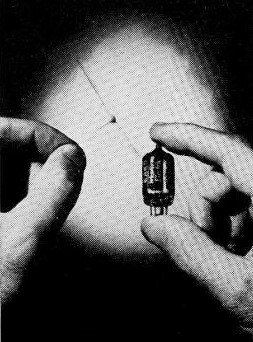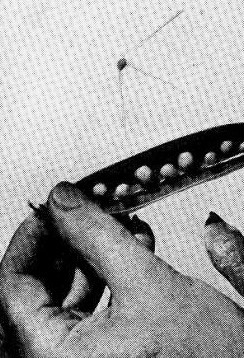Tiny But Tremendous Transistors
|
|
The October 1952 issue of Boys' Life magazine story entitled "Tiny But Tremendous Transistors," contained the first mention of transistors I can find in the Boy Scouts of America (BSA) flagship publication. Germanium was still the primary element used for semiconductors at the time, although silicon would soon replace it - and at a much lower cost. Whereas silicon is found on beaches all over the world (and everywhere else for that matter) in the form of sand, germanium at the time was obtained as a by-product of smelting zinc ore (which I didn't know until reading this story). Today, of course, both elements are abundantly available. Mr. Cavanaugh points out that although wonderful things are being done with transistors in the way of improving performance, lowering power requirements, and reducing product sizes and weights, consumers would likely not start seeing transistorized goods on the store shelves for a couple more years. Until widespread adoption of transistors became the industry norm, it was still cheaper to manufacture radios, televisions, etc., with vacuum tubes. Tiny But Tremendous Transistors By J.O. Cavanaugh
This transistor and the vacuum tube beside it both do the same work.
Transistor is only half size of a pea, costs only fraction of vacuum tube. (those are peas in a pod, in case you are not familiar with it) One of the greatest developments in the history of science is going on right now. Its military significance is second only to that of the atom bomb. And it will allow a hundred-fold increase in the complexity of our industrial world. The development is a tiny electronic device called a transistor. The transistor is going to push vacuum tubes – radio tubes for instance – out of the limelight. Without vacuum tubes there would be no electronics. Television, radar, bombsights, computers, depend on the vacuum tube. Compare this intricate device with the simple transistor – a tiny object, half the size of a garden pea. The transistor does the same work but does it on one millionth the amount of power. It requires no warm up. It generates no heat. It's easy and cheap to make. It's vibration proof, shock proof, practically unbreakable. Vacuum tubes act as valves controlling the flow of electrons as a faucet controls the flow of water. They can take a weak electric signal – a radio signal, for example – and amplify it many times. They can change alternating current to direct current, oscillate, generate and control power. Yet the transistor outshadows it by far. Transistors are the electrical equivalent of vacuum tubes – but there al similarity ends. The transistor is composed of a solid substance – chemically treated germanium. A fairly plentiful semi-metallic element, germanium is a by-product of smelting zinc ore. Compactness and durability are but two points of transistors' superiority over vacuum tubes. The tube uses about one watt to perform its work; the transistor does the same work on about one millionth of a watt. "Dick Tracy" wrist watch size radios and hearing aids complete with their power unit that will fit in the ear cavity, are, of course, possible. The Army Signal Corps had a device for converting radio teletype messages. The unit weighed 100 pounds, plus a large generator. But the new transistor equipment weighs only 10 pounds. Transistors cost only a small fraction of what it costs to make vacuum tubes. Back in 1948, two physicists, Dr. John Bardeen and Dr. Walter Brattain were doing research. They discovered that germanium has unusual electronic properties. Working from this discovery the two scientists developed the first transistor – an accomplishment ranking in importance with those of De Forest, who invented the vacuum tube, and Marconi, the father of wireless. But this first transistor was limited in its application. Better ones have been developed. Although it is possible that a few transistors may be used during 1953 in television sets and a few may appear in the open market, you're not likely to see much of them for a year or two. Transistors are still in their infancy and production is limited. Nobody can predict all the possibilities of this new development. But electronic wonders far beyond our present comprehension are much nearer just because of this tiny but tremendous transistor.
Posted December 8, 2020 |
|


